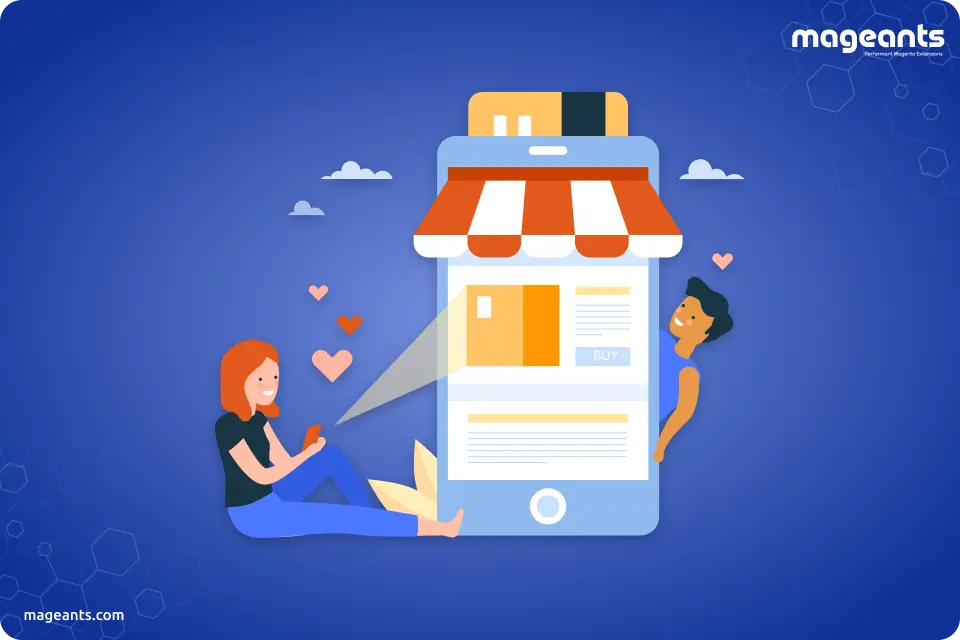
How to Improve Customer Experience in E-commerce Website?

STOP and THINK!
- Is your customer satisfied visiting your webpage?
- If not, then what are the ways to improve customer experience in ecommerce?
- And most importantly, why it is important to maintain it?
Get all the answers cleared in this article. Before we dig in, though, let’s just know what exactly “Ecommerce Customer Experience” means.
What is the eCommerce Customer Experience?
Ecommerce Customer Experience (ECX) refers to the totality of interactions between customers and merchants over digital channels. In the world of online shopping, it’s not just about selling products—it's about providing an exceptional customer experience. And while the term Ecommerce Customer Experience (or ECX) may sound new and unfamiliar, the concept lies at the heart of Amazon.com; its founder, Jeff Bezos, was known for saying “Your brand is what others say about you when you're not in the room."
What does this mean? From the perspective of the customer, this means giving them a positive experience that they would want to share with their friends, family, and colleagues. At the same time, any negative experiences should be dealt with swiftly, and the company should always strive to put itself in the best position to provide outstanding service and build strong relationships with clients.
Four primary aspects to developing a successful Ecommerce Customer Experience:
- Focus on the customer
- Provide great content
- Be responsive
- Use technology to make things easier!
The Importance of Customer Experience for eCommerce
Customers have different expectations now than they had even 10 years ago. They have become extremely savvy and expect a lot from companies that sell to them. If you don't deliver a good experience, customers won't buy your products or services again.
73% percent of consumers say that customer experience has a major impact on their purchasing decisions. In layman's terms, that means almost three-quarters of shoppers would likely decide not to buy from a store that provides a poor experience.
Reasons why it is important to improve the customer experience for eCommerce:
- Increase Customer Satisfaction
- Boost Customer Loyalty
- Improve Customer Retention
- Increase sales and conversions
- Attract new customers
- More brand awareness due to better experience
- Build trust among customers
8 Ways to Improve Customer Experience in eCommerce Website

Want to know how to improve ecommerce customer experience? Check out the below tips for creating a great ecommerce customer experience in 2022 and beyond to help improve customer retention, customer loyalty, and ultimately your customer’s lifetime value.
1. Easy Checkout Process
Create a secure and easy checkout process for your customers. Creating an easy checkout process helps in reducing abandoned cart rates. The checkout process should be easy, seamless, and secure. Payments must be secure, and the shopping cart should be visible from every page. A secure checkout process ensures that information entered into the system is kept private. Once a purchase is completed, payment details need to be securely stored until the transaction is complete. Using two-factor authentication, you can prevent fraudsters from taking advantage of credit cards or personal information.
Some of the eCommerce checkout flow best practices are:
- Keep the checkout process transparent
- Enable and allow guest checkout
- Create one-page checkout with a few simple steps
- Don't ask for unnecessary information
- Use a clean and mobile-friendly website design
- Remove distractions
- Offer adequate payment methods
- Remove surprise costs and fees
- Feature security seals and badges
2. Personalization
In today's technological world, with a plethora of products to choose from online, consumers want the products they buy to reflect their personal tastes and preferences. In order to achieve this, customers have to be able to make choices based on their individual tastes. This is where personalization comes in. When a customer shops for certain products online, not only do they want to find the best quality product at the lowest price possible, but they also want to feel like they're getting exactly what they want. If they don't get exactly what they were looking for, then they won't buy these products again. To ensure they get what they want, businesses have begun using personalization in ecommerce.
Try to recommend products based on your personal preferences and shopping history. These recommendations provide a personalized experience on our website and make shopping convenient.
3. Offer BOPIS
Buy Online, Pick-Up In-Store Strategy is a kind of tactic used by eCommerce stores that give customers the option to pick up the products in-store that they have purchased online. For customers who have a busy schedule and can’t visit and browse a physical retail store, this option is particularly convenient for them. Once customers place an order, they will be asked to select a date and time to pick up their order in-store.
BOPIS is considered a retail sales strategy that has developed with the growth of eCommerce. This omnichannel retail tactic offers buyers the convenience of buying products online anytime, and the ability to pick up their orders at a local store at their convenient time, but at the working hours of the store.
4. Implement Features For Mobile Users (Mobile Responsive Website)
Mobile responsive design is becoming increasingly popular among consumers who browse the Internet on smartphones and tablets. Websites that do not display correctly on mobile devices are frustrating to users and can lead to lost sales. Users expect to be able to view content easily while they are on the go.
If you want your website to appeal to potential customers, instead of building websites first for desktop computers, developers build sites with a mobile design in mind. In doing this, they ensure that the user interface works well on small screens while still looking appealing on larger ones. Not only does this approach help users navigate the site easily, but it makes for more engaging experiences that provide a great user experience.
A mobile responsive website offers several advantages including reducing page load times, ensuring that web pages display properly across different devices, and providing users with a better browsing experience.
5. Use Social Media
The internet has changed the way we communicate today. More than ever before, social media platforms have become a place where businesses can interact with their customers directly. Customers will respond positively to companies that take advantage of social media. Thereby, it's crucial that your company has its own page on social media platforms like Facebook, Instagram, Twitter, YouTube, Pinterest, and LinkedIn.
Social media marketing strategies for ecommerce is also one of the best ways to increase conversion rates. By engaging with social media users, you can increase brand awareness as well as your exposure. Use these social media platforms to engage with your audience and encourage them to shop online.
If you don't have a Social Media Account yet, go ahead and create one now! Firstly, you can use some social media marketing strategies and start sharing your offers, products, services, and promotions via pictures and videos. Encourage users to share your posts with their friends and family members. Remember to tag your web pages and product links on social media platforms so that your followers can find your pages easier!
6. Customized Product Page
In order to increase conversion rate and enhance the customer experience in ecommerce, it is advisable to provide a customized product page for each individual product. Make sure that the product pages are clear enough and offer comprehensive information about the product. Make sure that you are offering free shipping on orders above a certain amount. Ensure to have clear CTA buttons.
7. Create An Intuitive Navigation Menu
Navigation menus enable visitors to easily find their way around your website and make it easier to return to certain sections. Navigation menus can take various forms; however, most modern websites use dropdown menus with links to each section.
8. Offer Excellent Customer Service
Customer service should be at the core of any business, and especially online businesses. One way to ensure that customers receive great customer service is to use chatbots. Chatbots are computer programs designed to mimic human interaction via text messaging. These bots aim to solve real-world problems and make decisions based on user input. Chatbots have become increasingly popular in recent years due to their effectiveness in solving complex customer issues and making quick responses. They’re even being implemented in some industries where human staff are not always available to assist.
Start Delivering The Best Customer Experience To Your Customers
As you can see, there are many ways to improve customer experience, including personalization, tracking customer behaviour, and mobile-optimized websites. By keeping track of your customers' actions and behaviours, you'll be able to identify the ones that drive high levels of engagement.
A smart eCommerce customer experience strategy is as important as a marketing strategy when it comes to growing your eCommerce business. Hopefully, with the assistance of our complete guide, you will be able to implement these different ways to improve your overall customer experience with your own eCommerce brand. These techniques will allow you to personalize customer experience for ecommerce that engages your audience. And that’s a win-win situation for both, your customers and your business.
